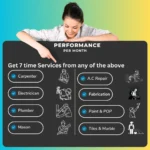How to Speed Up a WordPress Website: Complete Optimization Guide
A slow website frustrates visitors and affects search engine rankings. Whether you’re running a blog or an online store, knowing how to speed up a WordPress website is essential for better user experience, conversions, and SEO.
This guide walks you through powerful techniques to improve your WordPress site speed—no coding required.
Want expert-level training? Join the WordPress Website Mastery Course and learn performance tuning step-by-step.
Why Website Speed Matters
Page speed impacts:
- Bounce rates
- User experience
- SEO rankings
- Mobile performance
- Revenue and conversions
Even a 1-second delay can reduce page views by 11% and conversions by 7%.
1. Choose Fast Hosting
Your hosting provider plays a critical role in speed.
Recommended:
- Use a performance-optimized host like Hostinger, SiteGround, or Rocket.net
- Choose SSD-based servers
- Enable server-level caching
More details: WordPress Hosting: What You Should Know
2. Use a Lightweight Theme
Avoid bloated themes packed with unused features.
Fast WordPress themes:
- Astra
- GeneratePress
- Neve
- Kadence
Check this list: Best Free WordPress Themes
3. Install a Caching Plugin
Caching stores static versions of your site to load faster.
Top Caching Plugins:
- WP Rocket (paid)
- W3 Total Cache
- LiteSpeed Cache
- WP Super Cache
These tools reduce server load and page rendering time.
4. Optimize Images
Large images are one of the main reasons sites load slowly.
Tips:
- Compress images using plugins like Smush, ShortPixel, or Imagify
- Use WebP format for modern compression
- Resize images before uploading
5. Use a Content Delivery Network (CDN)
A CDN distributes your content across global servers for faster delivery.
Popular CDNs:
- Cloudflare (free & paid)
- BunnyCDN
- KeyCDN
A CDN helps especially with global audiences and image-heavy sites.
6. Minify and Combine CSS, JS, and HTML
Minification removes unnecessary code characters (spaces, comments, etc.) for faster load times.
How to do it:
- Use plugins like Autoptimize or Asset CleanUp
- Combine files to reduce HTTP requests
7. Disable Unused Plugins and Scripts
More plugins = more load.
Tips:
- Deactivate and delete unused plugins
- Avoid plugins with overlapping features
- Disable scripts on pages where they aren’t needed using Asset CleanUp
Learn about plugin management: Top 10 Plugins for Every WordPress Site
8. Enable Lazy Loading
Lazy loading delays the loading of off-screen images/videos until the user scrolls to them.
How to enable:
- Use built-in WordPress lazy load feature (enabled by default since WP 5.5)
- Or use plugins like Lazy Load by WP Rocket
9. Optimize Your Database
Over time, your database fills with unnecessary data (post revisions, spam, etc.).
Plugins to clean database:
- WP-Optimize
- Advanced Database Cleaner
Clean your database monthly for optimal performance.
10. Monitor and Test Speed Regularly
Use these tools:
- Google PageSpeed Insights
- GTmetrix
- Pingdom
- WebPageTest
They help track performance and suggest optimizations.
Bonus Tip: Avoid Shared Hosting for High-Traffic Sites
If your site is growing, upgrade to:
- VPS
- Managed WordPress Hosting
- Cloud hosting solutions
This ensures speed and scalability.
Conclusion
Knowing how to speed up a WordPress website is essential to stand out in today’s fast-paced digital world. The tips above will make your site faster, cleaner, and more professional.
Need help applying all this?
👉 Join the WordPress Website Mastery Course and get expert support to improve every part of your site.


 Subscription
Subscription Performance Subscription
Performance Subscription Premium Subscription
Premium Subscription Base Subscription
Base Subscription Furniture
Furniture Bed
Bed Kitchen
Kitchen Almirah and Wardrobe
Almirah and Wardrobe LCD Cabinet
LCD Cabinet Verified Partner
Verified Partner Earn Money
Earn Money

 AI & Data Science
AI & Data Science Business & Startup
Business & Startup Cybersecurity & Cloud
Cybersecurity & Cloud E-commerce & Sales
E-commerce & Sales Marketing & Growth
Marketing & Growth Web/App Development
Web/App Development